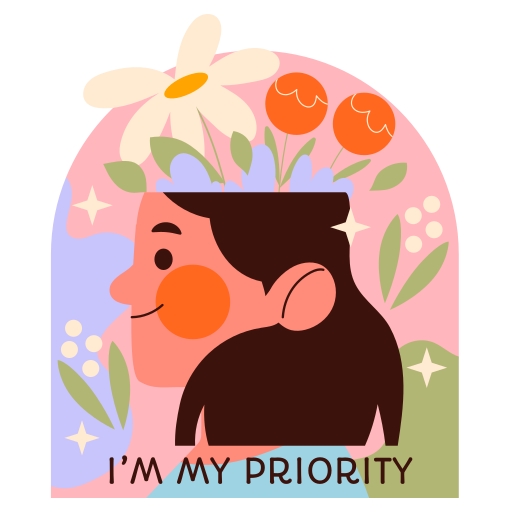Navigating relationships with shallow individuals can be a delicate balancing act, requiring a blend of patience and self-awareness. By arming yourself with strategies tailored to handle such personalities, you can navigate social interactions with grace and authenticity. Understanding the intricacies of shallow behavior and implementing targeted approaches can pave the way for more meaningful connections and personal growth. Stay tuned to uncover insightful tips on managing shallow encounters and fostering genuine relationships, equipping you with the tools to navigate the complexities of interpersonal dynamics effectively.
Understanding Shallow Behavior
Analyzing shallow behavior provides valuable insights into the motivations and characteristics of individuals who lack depth in their interactions and perceptions. Recognizing shallowness involves observing signs such as a focus on appearances, a lack of empathy, and disinterest in meaningful discussions. Handling superficiality requires a nuanced approach that balances empathy with setting boundaries. It is essential to understand that shallow behavior may stem from insecurities or a lack of self-awareness. Responding to shallow individuals with compassion can help navigate interactions more effectively. By acknowledging the struggles of shallow individuals and responding with empathy, one can maintain a sense of understanding while also protecting their own well-being. Recognizing and addressing shallow behavior is an important step in fostering healthier and more meaningful relationships.
Dealing With the Root Cause
Understanding the underlying origins of shallow behavior is paramount in addressing and navigating interactions with individuals who exhibit superficial tendencies. When delving into the root causes of shallow behavior, it is crucial to explore motivations and address insecurities. Here are four key aspects to consider:
- Psychological Factors: Dive into the individual's past experiences and traumas that may have contributed to their shallow tendencies.
- Insecurity Triggers: Identify specific triggers that exacerbate their insecurities, leading to surface-level interactions.
- Social Influences: Consider how societal norms and pressures may have shaped the individual's behavior towards shallowness.
- Self-Reflection: Encourage the individual to introspect and confront their insecurities, fostering personal growth and depth in their interactions.
Setting Personal Boundaries
Exploring the dynamics of personal boundaries becomes essential in fostering healthy interactions with individuals demonstrating shallow tendencies, emphasizing the importance of establishing clear limits to safeguard one's well-being and maintain meaningful connections. Asserting boundaries is an integral part of personal growth, as it allows individuals to protect themselves from negativity and cultivate relationships based on respect and understanding. By setting boundaries, one can effectively communicate their needs and expectations, fostering a sense of self-worth and confidence. This practice not only helps in dealing with shallow individuals but also promotes emotional well-being and personal development. It is crucial to recognize the significance of asserting boundaries in navigating relationships with shallow people while prioritizing one's mental health and growth.
Cultivating a Positive Mindset
Cultivating a positive mindset is foundational to fostering resilience and navigating challenging interactions with individuals who exhibit shallow behavior. When faced with shallow individuals, maintaining a positive outlook can help you stay grounded and respond effectively. Here are four key strategies to cultivate a positive mindset in such situations:
- Positive Affirmations: Start your day with affirming statements to boost your confidence and self-worth.
- Embracing a Growth Mindset: View challenges as opportunities for growth and learning rather than setbacks.
- Practicing Gratitude: Focus on the good in your life to shift your perspective towards positivity.
- Mindful Responses: Pause before reacting to shallow behavior, respond with kindness and empathy, and prioritize meaningful connections over superficial interactions.
Implementing Self-Improvement Strategies

To enhance personal growth and navigate interactions with shallow individuals effectively, implementing self-improvement strategies is paramount. Building resilience and enhancing emotional intelligence are key components in this process. Building resilience equips individuals with the ability to bounce back from challenging interactions and maintain a sense of self amidst shallow behavior. Developing emotional intelligence allows for better understanding and management of one's emotions in the face of shallow remarks or actions. By focusing on these aspects of self-improvement, individuals can better cope with shallow individuals, assert their needs calmly, and remain centered in meaningful relationships. Strengthening resilience and emotional intelligence serves as a shield against the negativity that shallow behavior may bring, fostering personal growth and positive interactions.
Surrounding Yourself With Depth
Surrounding yourself with depth in relationships and conversations is crucial for fostering personal growth and meaningful connections. To nurture relationships and foster meaningful connections, consider the following:
- Quality Over Quantity: Prioritize deep, authentic connections over superficial interactions.
- Engage in Meaningful Conversations: Discuss topics of substance that promote growth and understanding.
- Value Emotional Intelligence: Surround yourself with individuals who exhibit empathy and understanding.
- Seek Supportive Relationships: Build a network of individuals who uplift and inspire you on your journey towards personal growth and fulfillment.
Embracing Uniqueness

Fostering an environment that embraces individual uniqueness can significantly enhance personal growth and meaningful connections. Embracing individuality is a powerful tool in building self-confidence and self-awareness. Celebrating differences and encouraging authenticity not only enriches personal experiences but also cultivates a sense of acceptance and belonging. By recognizing and valuing the distinct qualities that make each person unique, one can create a supportive and inclusive atmosphere that promotes self-expression and mutual respect. Embracing uniqueness allows individuals to feel empowered in their own skin, fostering a positive self-image and a deeper appreciation for the diverse tapestry of humanity. Through embracing individuality and celebrating differences, one can create a harmonious environment where everyone feels valued and accepted for who they truly are.
Frequently Asked Questions
How Can One Differentiate Between Someone Who Is Genuinely Shallow and Someone Who May Just Be Going Through a Temporary Phase of Superficial Behavior?
Distinguishing temporary superficial behavior from genuine shallowness requires attentiveness to consistency and context. Assess the duration and triggers of the behavior. Encourage depth development through empathy and meaningful conversations. Offer support during transient phases while setting boundaries for consistent traits.
Is It Possible for Someone Who Exhibits Shallow Behavior to Change and Develop More Depth in Their Character Over Time?
It is possible for individuals displaying shallow traits to evolve and develop depth through self-reflection and growth. Empathy and understanding play key roles in this transformation, allowing for a shift towards more meaningful interactions and personal growth.
What Are Some Subtle Signs That Indicate a Person Is Shallow, Even if They Try to Hide It or Present Themselves Differently?
Recognizing shallow behavior involves observing lack of depth in conversations, excessive focus on materialism, and superficial judgments. Warning signs include insincerity, lack of empathy, and a tendency to seek validation through external factors, revealing a superficial nature.
How Can One Maintain a Healthy Balance Between Setting Boundaries With Shallow Individuals and Still Showing Compassion Towards Them?
Maintaining a healthy balance between setting boundaries with shallow individuals and showing compassion involves practicing empathetic assertiveness. Recognize their struggles, set clear boundaries, respond with kindness, and prioritize your mental well-being while understanding their perspective.
Are There Any Specific Techniques or Strategies That Can Help Someone Effectively Communicate With a Shallow Person Without Getting Drawn Into Their Superficial Mindset?
When communicating with a shallow individual, active listening and empathy are key. Approach conversations with understanding and assertiveness. Redirect discussions towards meaningful topics, showcasing depth. Maintain boundaries while showing compassion, steering clear of superficiality.

















